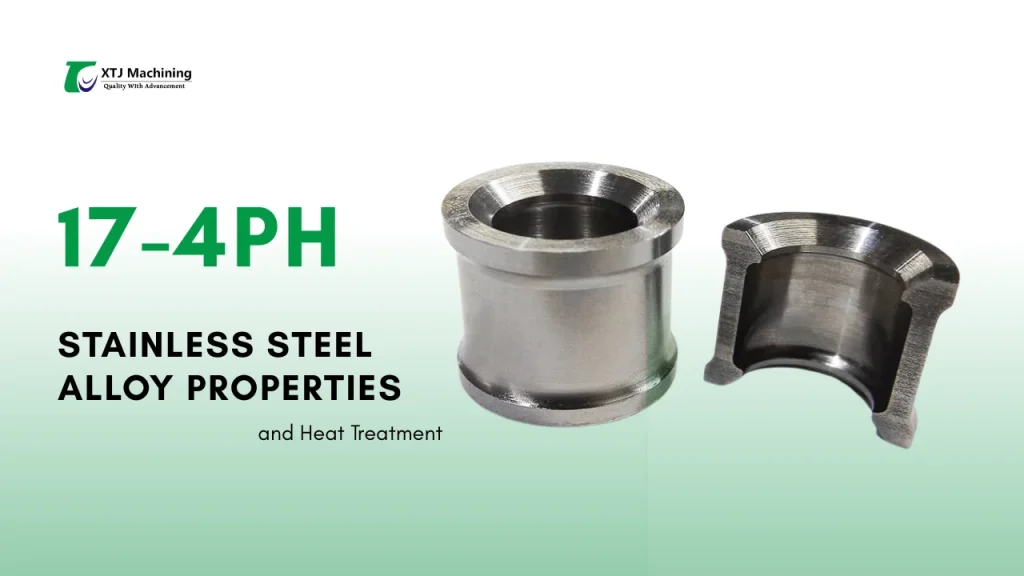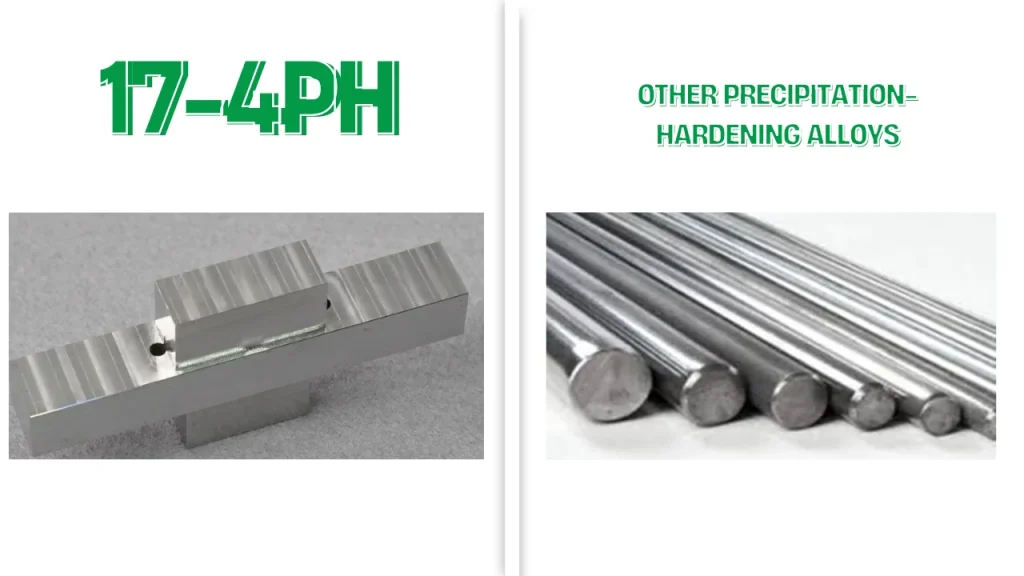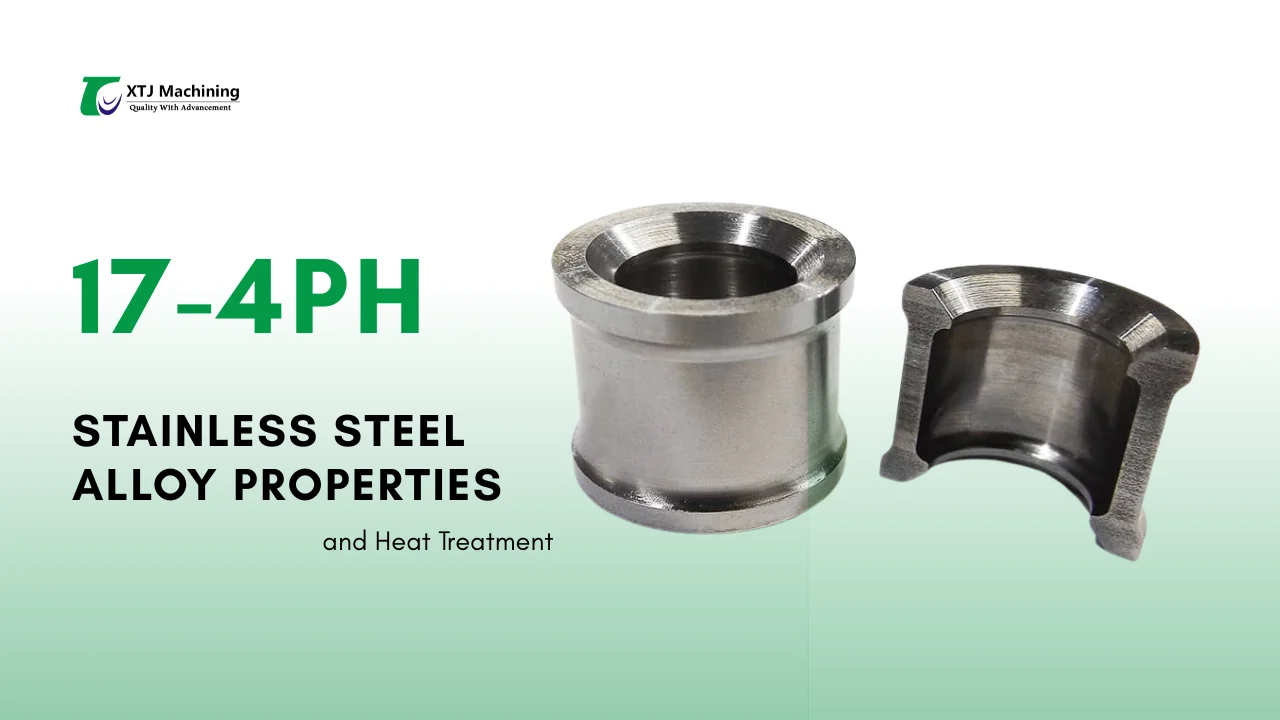If you’re diving into steel alloys and seeking one that combines high strength with exceptional corrosion resistance, then 17-4PH stainless steel is where your search ends. Known in the industry as AISI 630 or UNS S17400, this martensitic precipitation-hardening alloy packs a punch with its unique blend of hardness, durability, and versatility. Whether you’re an engineer, manufacturer, or buyer, understanding the properties, heat treatments, and real-world applications of 17-4PH can fundamentally change how you approach demanding projects — from aerospace components to oilfield valves. Ready to unlock why this alloy is a game-changer? Let’s get into what makes 17-4PH stand out among stainless steels.
Chemical Composition and Core Properties of 17-4PH Stainless Steel
When it comes to 17-4PH stainless steel, understanding its chemical makeup is key to appreciating why it performs so well in tough environments. It is a precipitation-hardening martensitic stainless steel designed to offer high strength and excellent corrosion resistance.
Elemental Breakdown
Here’s a quick look at the main elements in 17-4PH and what they do:
| Element | Percentage Range | Role in Alloy Properties |
|---|---|---|
| Chromium (Cr) | 15-17% | Boosts corrosion resistance, especially pitting and crevice resistance |
| Nickel (Ni) | 3-5% | Improves toughness and corrosion resistance |
| Copper (Cu) | 3-5% | Key for precipitation hardening, enhances strength during aging heat treatment |
| Niobium + Tantalum (Nb+Ta) | 0.15-0.45% | Stabilizes the microstructure and improves hardenability and stress corrosion resistance |
Mechanical Properties
17-4PH shines after heat treatments like the H900 condition with notable mechanical metrics:
- Yield Strength: Around 140 ksi (965 MPa) offering high resistance to deformation
- Tensile Strength: Typically 160 ksi (1100 MPa) ensuring excellent load-bearing capability
- Elongation: Moderate at roughly 8-10%, balancing strength with some ductility
- Service Temperature: Optimal performance up to about 600°F (316°C)
This combination makes 17-4PH ideal for parts needing strength without sacrificing toughness.
Corrosion and Thermal Performance
Compared to common stainless steels like 304, 17-4PH has:
- Better resistance in chloride environments reducing risks of pitting and crevice corrosion
- Lower oxidation limits but still stable up to 600°F without degradation
- Magnetic nature due to its martensitic structure (unlike the non-magnetic 304)
This makes it strong against rust while performing reliably in moderately high temperatures.
Quick Property Comparison Chart
| Property | 17-4PH | 304 SS | 410 SS |
|---|---|---|---|
| Yield Strength (ksi) | 140 (H900) | 30-50 | 70-90 |
| Corrosion Resistance | High (chlorides) | Moderate | Low |
| Magnetic | Yes | No | Yes |
| Service Temp Limit (°F) | 600 | 870 | 1200 |
17-4PH offers a fantastic balance of strength and corrosion resistance with heat treatability, making it a go-to for demanding industrial uses.
If you want to learn how to get the most from 17-4PH in your projects, check out XTJ Precision Mfg’s expertise on stainless steel CNC machining benefits for precision components that last.

Heat Treatment and Processing Achieving Peak Performance
Solution Annealing and Aging
To get the best out of 17-4PH stainless steel, the heat treatment process is key. Start with solution annealing—heat the material to about 1,900°F (1,040°C) and then rapidly cool it, usually by air cooling. This step dissolves all the precipitates and resets the microstructure. After that, comes aging or precipitation hardening, where the steel is heated again but at a lower temperature, typically between 900°F and 1,100°F (480°C–600°C), and held for 1 to 4 hours. This controls the hardness and strength by allowing copper-rich precipitates to form. You can tailor the mechanical properties by adjusting aging time and temperature—shorter aging gives higher strength; longer aging improves toughness but may reduce hardness.
Fabrication Techniques
When working with 17-4PH, here are some best practices to keep in mind:
- Hot forming works well after solution annealing since the grain structure is soft and easier to shape.
- For cold forming, 17-4PH is tough and springy but manageable with sharp tools and moderate force.
- Welding needs attention—TIG welding with post-weld heat treatment (PWHT) is preferred to restore strength and avoid cracking.
- Use carbide tooling for machining, and always run at low speeds with high feed rates to prevent work hardening and tool wear.
- Proper cooling and lubrication during machining reduce heat buildup and extend tool life.
Common Pitfalls to Avoid
Watch out for these common issues during heat treatment and fabrication:
- Warping or distortion from uneven heating or cooling can mess up tight tolerances.
- Sensitization occurs if the steel is kept too long at 800°F–1,600°F, making it vulnerable to corrosion.
- Overaging reduces hardness and yield strength—stick to recommended aging times.
- Stress corrosion cracking (SCC) can happen if parts hear up over service limits or experience corrosive environments without proper treatment.
Here’s a quick troubleshooting flow for heat treatment problems:
- Check for uneven heating → adjust furnace setup and parts placement
- Inspect aging time/temp → follow prescribed cycles closely
- Monitor post-weld treatment → make sure PWHT is done properly after welding
Pro Tip from XTJ Precision Mfg
At XTJ Precision Mfg, we offer expert heat treatment services tailored specifically for 17-4PH parts. Our precise control over annealing and aging ensures your components hit the right balance of strength and toughness for your application. Plus, combining our heat treatment with precision CNC machining helps maximize your part performance. For guidance on machining practices, check out our stainless steel CNC machining benefits to get the most from your 17-4PH parts.
Key Applications Where 17-4PH Excels in Demanding Industries
17-4PH stainless steel is trusted across tough industries thanks to its mix of strength, corrosion resistance, and versatility. Here’s where it really shines:
Aerospace and Defense
- Used in gears, fittings, and missile components
- Offers excellent strength-to-weight ratio
- High fatigue resistance ensures reliable long-term performance
- Meets strict aerospace standards, making it a go-to for flight-critical parts
Oil, Gas, and Petrochemical
- Ideal for pump shafts, valves, and nuclear waste storage equipment
- Handles harsh sour gas environments with NACE MR0175 compliance
- Resistant to corrosion in aggressive oilfield conditions, reducing downtime
Chemical and Food Processing
- Common in seals, mixers, and conveyor components
- Complies with FDA standards for clean, safe operations
- Magnetic nature helps in contaminant removal and magnetic separability during processing
Emerging Uses
- Gaining ground in additive manufacturing, especially with AMS 7012 powder
- Used in automotive molds for precision and durability
- XTJ Precision Mfg recently completed a valve prototype case study showcasing rapid turnaround and quality
Industry Stats
- Around 40% of aerospace fittings use 17-4PH for strength and corrosion resistance
- Frequently referenced in ASTM standards for precipitation-hardening stainless steels
- Growing adoption in custom machining and fabrication due to its reliable performance
For industries that demand reliability and toughness, 17-4PH delivers — and XTJ Precision Mfg is ready to help you get the best out of this high-strength corrosion-resistant steel.
Comparisons 17-4PH vs Other Precipitation-Hardening Alloys

Head-to-Head Alloy Comparison
Here’s a quick rundown of how 17-4PH stacks up against other popular precipitation-hardening and stainless alloys:
| Property | 17-4PH | 17-7PH | Custom 465 | Austenitic 316 |
|---|---|---|---|---|
| Strength | High | Moderate | Very High | Moderate |
| Ductility | Moderate | Higher | Moderate | High |
| Corrosion Resistance | Good, especially in chlorides | Good | Excellent | Excellent |
| Cost | Moderate | Slightly Lower | Higher | Lower |
| Hardness | High | Medium | Very High | Lower |
| Service Temp (°F) | Up to 600°F | Up to 600°F | Up to 900°F | Up to 800°F |
17-4PH offers a balanced mix of strength and corrosion resistance but at a midrange price point. Custom 465 shines when max strength and corrosion are deal breakers, while 17-7PH gives you better ductility if that’s a priority. Austenitic 316 is a less expensive, corrosion-focused option but won’t match the strength or hardness of 17-4PH.
When to Choose 17-4PH
- You need high strength up to 600°F, like in aerospace or defense parts.
- Corrosion resistance is important but not extreme — great for oilfield valves and petrochemical equipment.
- You need a magnetic alloy for certain applications.
- Your project demands a cost-effective option with balanced properties.
- If you require performance under cryogenic temperatures, consider alternatives like 304 or 316 stainless steels.
17-4PH thrives where a good mix of toughness, corrosion resistance, and heat tolerance is required without breaking the bank.
Cost-Benefit Analysis
- Lifecycle savings: 17-4PH’s strength and corrosion resistance reduce the frequency of part replacement and downtime.
- Reduced downtime means less disruption in critical processes, especially in aerospace and oil & gas sectors.
- Competitive pricing when sourced through specialists like XTJ Precision Mfg, offering AMS-certified stock and precision machining.
- XTJ’s ability to handle custom jobs helps keep waste and costs down by optimizing heat treatments and machining.
In the U.S. market, 17-4PH delivers value by cutting overall ownership costs while meeting demanding standards and certifications. Choosing the right alloy saves money and time over the life of a component.
Sourcing and Manufacturing with XTJ Precision Mfg Your Partner for 17-4PH Excellence
When it comes to sourcing 17-4PH stainless steel, XTJ Precision Mfg has you covered with a wide range of forms and sizes. Whether you need stock bar, plate, sheet, forgings, or custom seamless tubing, we supply materials meeting AMS 5643 and AMS 5604 standards. This ensures you get reliable, certified 17-4PH stainless steel ready for your demanding applications.
XTJ’s strength lies in precision CNC machining tailored specifically for 17-4PH. With ISO 9001 and AS9100 quality certifications, our tight process controls guarantee consistent performance and parts that meet aerospace and industrial specs. We understand the importance of quick and reliable delivery, so lead times are optimized to keep your projects on schedule, with global shipping available.




